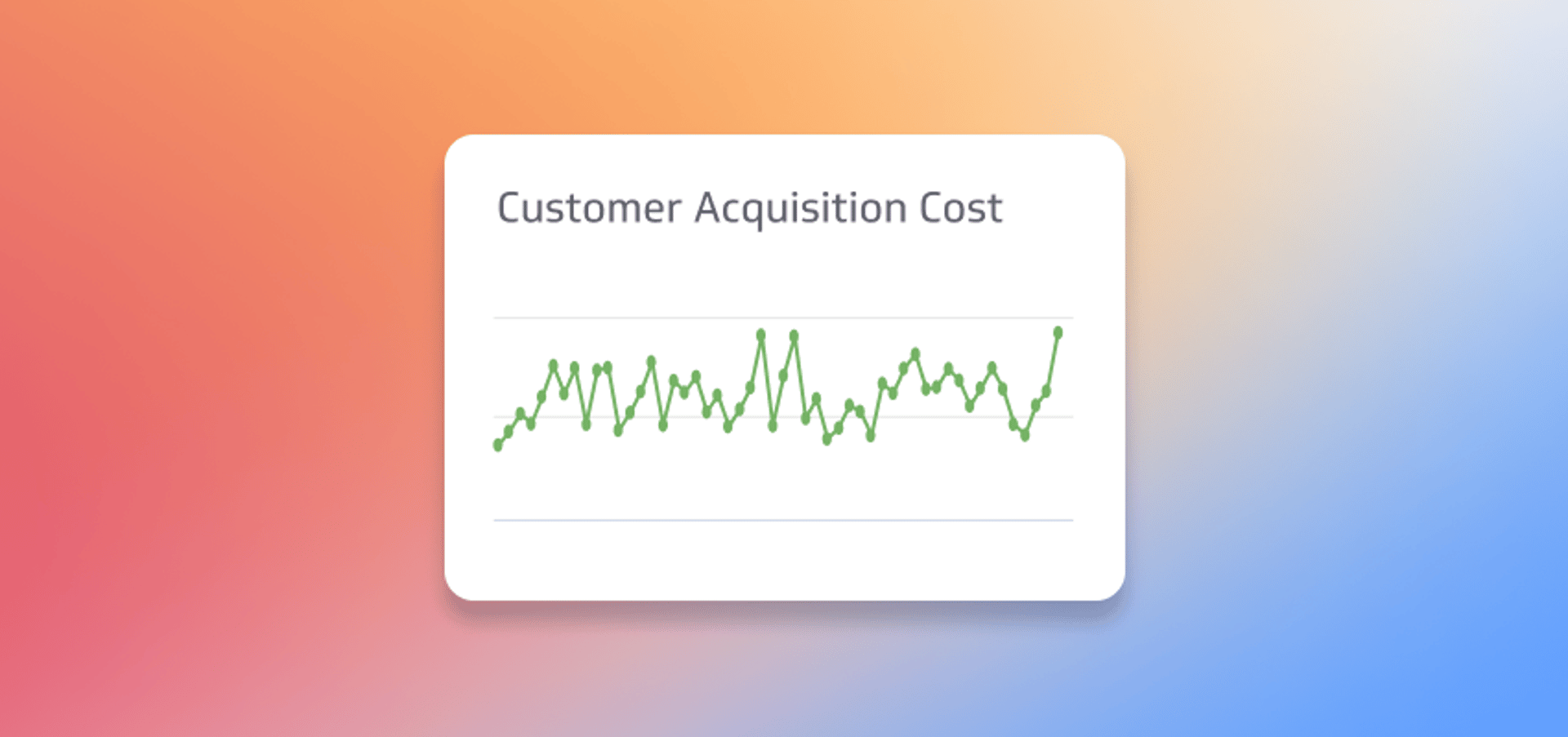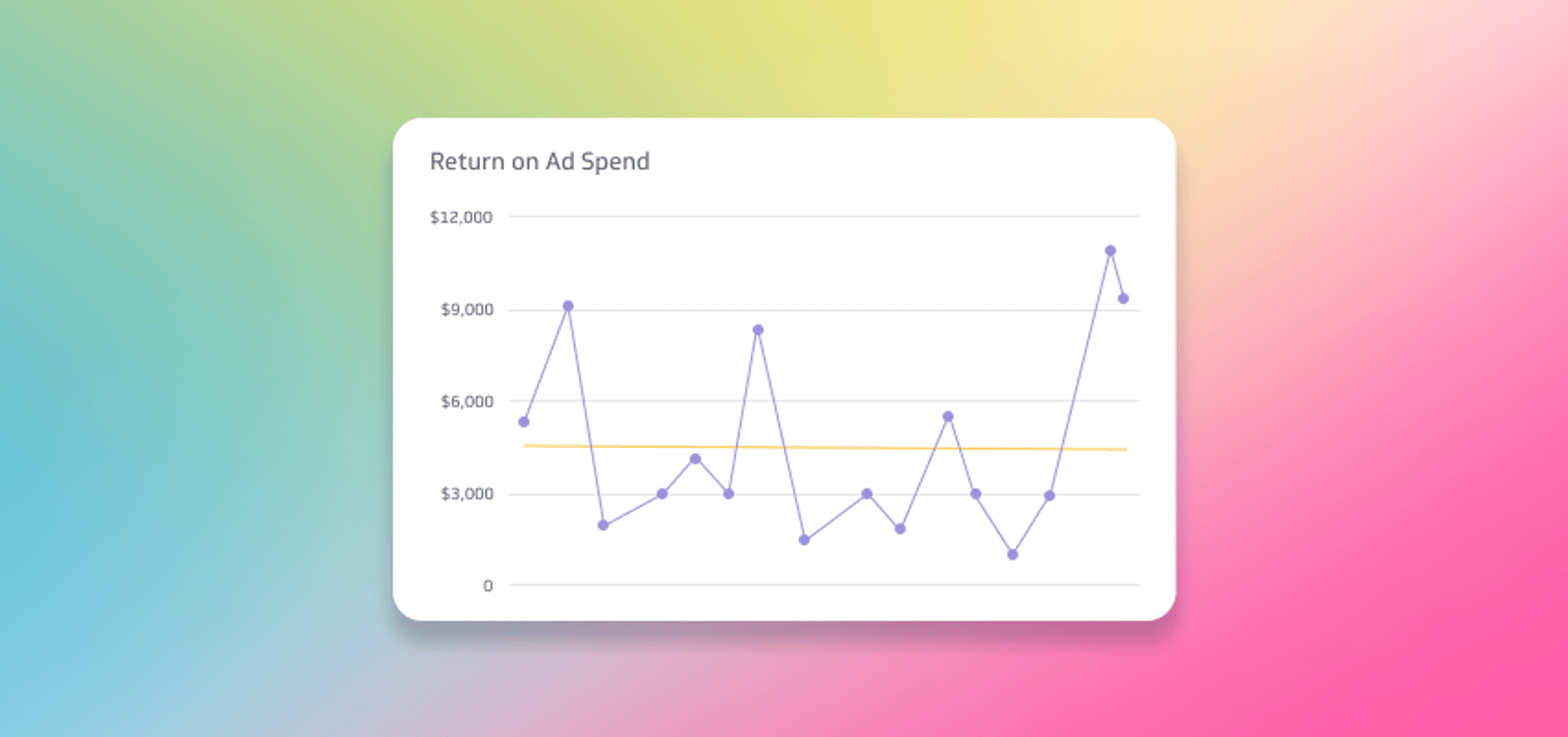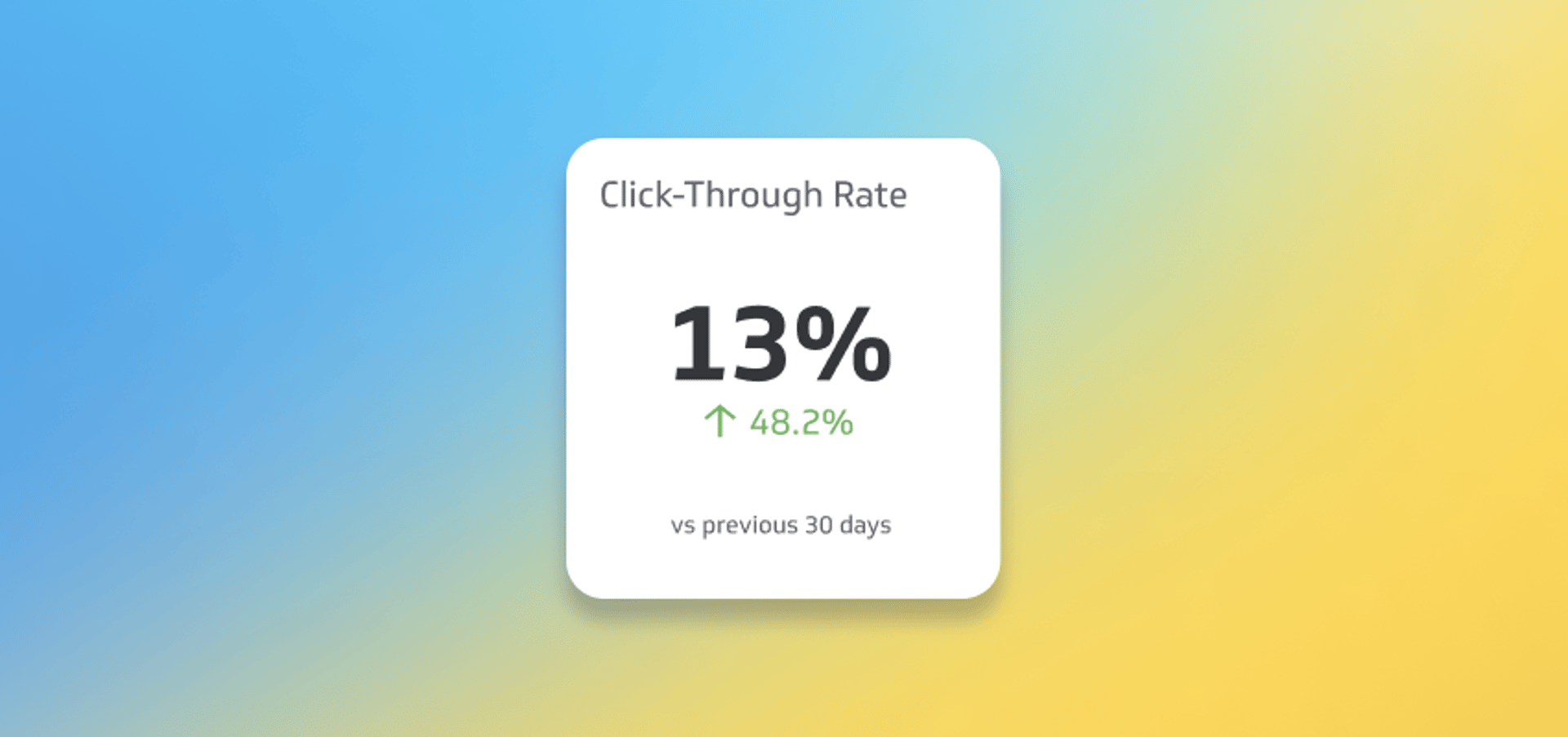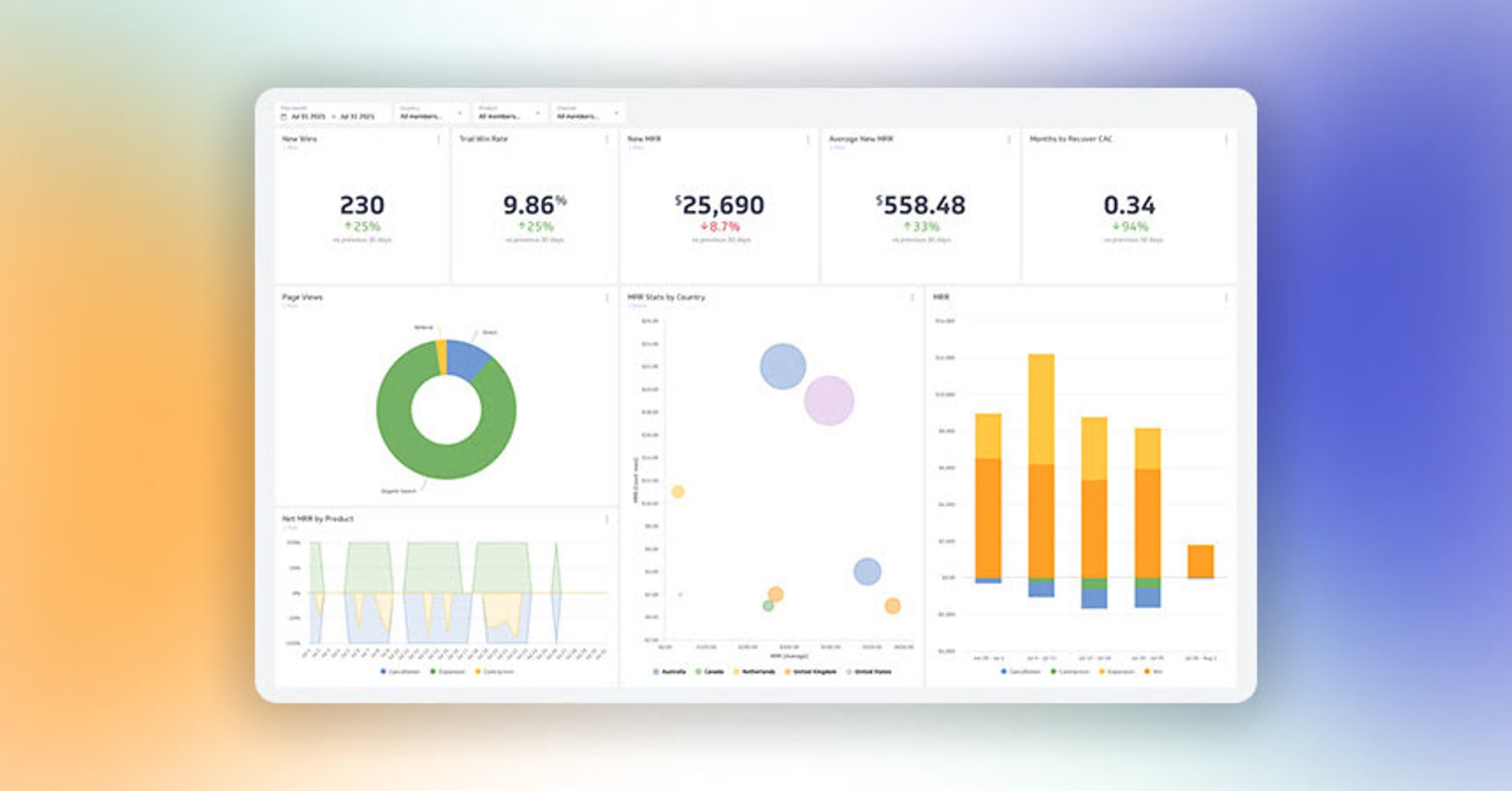10 KPIs to monitor your digital marketing performance

Published 2023-09-15
Summary - Revenue might be the primary KPI of any marketing department. But digital marketing is more nuanced, more complicated. Take. a deep dive into the 10 marketing KPIs you need to track to develop a single source of truth.
Every digital marketing tool in existence provides its own version of the truth. Think of all of the applications that you log in to in a day… Where do you find the single source of truth when it comes to digital marketing performance?
You know the old adage, ‘beauty is in the eye of the beholder’? Digital marketing performance is much the same. Digital marketing performance needs to be evaluated with an eye to subjectivity while balancing objectivity. And that’s where KPIs come in.
To be able to objectively evaluate your performance, you need a few key ingredients:
- Industry-standard KPIs to compare and benchmark against
- Clear business objectives and targets
- Team-level goals that show the line of sight to achieving those big objectives
It’s worth noting that revenue, ultimately, is the primary KPI of any marketing department. But digital marketing is more nuanced and more complicated. So, I’m going to take you on a deep dive into the ten marketing KPIs you need to track to develop that single source of truth.
In this article, I’ll cover:
- What is a marketing KPI?
- Why do you need marketing KPIs?
- Top 10 marketing metrics and KPIs to monitor your digital marketing performance
What is a marketing KPI?
A marketing KPI is a quantifiable value that is used to measure how effectively you’ve reached a departmental or business target over a specified period of time.
Here are three examples of digital marketing KPIs that your team could set:
- Increase organic web traffic by 50% by the end of Q4
- Increase the number of marketing-qualified leads by 25% by the end of Q2
- Reduce CAC Payback Period from 18 months to 12 months
Once you set your KPIs, it’s time to strategize what your digital marketing team is going to do to achieve them and the metrics you’re going to track along the way. If you're wondering what the difference is between a KPI, metric, and measure, check out this in-depth post.
Why do you need digital marketing KPIs?
Marketing teams need KPIs in order to measure their output. Digital marketing is a fast-paced role, and with a flurry of activity happening day in and day out, it’s important for digital marketers to have a goal post. KPIs act as that goalpost.
The anatomy of a KPI speaks to its importance. Every KPI needs three things:
- a measurable metric or data point
- a target
- a timeline
With that in mind, let’s take a look at the top digital marketing metrics and KPIs that marketers like you (and me!) track every day.
Top 10 digital marketing metrics and KPIs to track in 2022
Let’s look at the top marketing metrics and KPIs you can use to measure your digital marketing performance in 2022.
1. Marketing Qualified Lead (MQL) to Sales Qualified Lead (SQL) Conversion Rate
Marketing qualified leads (MQL) is a key marketing metric for digital marketing teams. MQLs measure the volume of leads generated by marketing efforts that are then passed on to sales. SQLs are leads who meet a certain threshold defined by the sales team, making them qualified prospects.
The MQL to SQL conversion rate measures how many MQLs convert to an SQL. Why is this important for digital marketing teams? Like most of the metrics in this list, it’s a good way to measure impact at a particular stage of your lifecycle.
2. Customer Lifetime Value
Revenue metrics matter to marketers, and Customer Lifetime Value, or LTV, is no different. LTV is a specific metric as it quantifies the total revenue that is expected from a single customer account. Like customer acquisition cost, which I’ll touch on below, this metric helps marketers understand which customer segments are most valuable to the business. In fact, you can measure your LTV to CAC ratio, which indicates if the lifetime revenue associated with a customer is higher or lower than the cost to acquire them.

3. Customer Acquisition Cost
Customer acquisition cost (CAC) is a metric shared by marketing and sales. CAC measures the sum of all costs associated with acquiring a new customer. I mentioned it earlier in this post, and it’s worth mentioning again: revenue is a key marketing KPI! Knowing how much it costs to acquire a customer, alongside other income metrics, gives marketers insight into which market segments are profitable for the business and where to double down their focus.
4. Goal Completions
It’s very likely that you’re tracking goal completions in your Google Analytics instance. This is an important metric to track because it’s an indication of whether or not your content is successfully engaging your customers to the point of conversion. You can look at goal completions as a subset of goal conversions, too. Goal completions give you an idea of the number of visitors to your website who convert. This is an important metric if you have a conversion rate KPI in your marketing strategy.

5. Return on Ad Spend
Money matters! It can be argued that revenue is one of the most important marketing metrics. Whether it’s advertising dollars that are being spent or revenue coming in the door, the road of KPIs leads to revenue. Return on ad spend (ROAS) is a lever behind revenue growth. ROAS quantifies the revenue that is generated for every dollar you spend on advertising and compares your total ad spend to the revenue generated from the campaign.
6. Impressions
Impressions are the total number of times that your webpage, advertising, or social post has been viewed. This is an important metric to track against your KPIs because it’s indicative of awareness and visibility. And a good way to measure if your message resonates with users. If you see high impressions but low click-through rates on your social media posts, for example, it may be time to refine your messaging so you can hit your goals!

7. Click-through Rate
Click-through rate (CTR) is arguably one of the most important metrics to track your campaign performance. CTR is also a metric that can be applied to a number of marketing channels, including landing pages, digital advertising, social media, or email marketing. Like many of the other metrics listed, CTR is a great way to measure the value you are providing your target audience. Watch your click-through rate closely. The higher your CTR, the more likely it is that you are reaching your target market and their needs or pain points.
8. Content Engagement
Want to know what’s working and where there is room for improvement in your digital marketing campaigns? Content engagement is the metric to track. For marketers, content engagement will help you measure all likes, shares, comments, and clicks on your social media content. This will help you determine, much like impressions, if your content is “sticky” — is your audience engaging with your message, and is their engagement impacting the success of your marketing campaigns?

9. Average Time on Page
Wondering how long users are sticking around on your website? Average time on page is a key metric to track if you have a website growth KPI. This metric, found in Google Analytics, considers the average amount of time spent on a single page by all users. Digital marketers should watch the average time on page for their campaign landing pages to know if users are reading their message and if it’s resonating.
10. Bounce Rate
Bounce rate goes hand-in-hand with an average time on page. Your bounce rate metric tells you the percentage of users who viewed your page, like a landing page and exited without triggering an activity, like completing a form submission or demo request. If your bounce rate is high, it should be an indicator that you may not reach a KPI if it’s tied to a website goal.
It’s worth noting here that Google Analytics 4 doesn’t track bounce rate as the default for reporting but instead looks at engagement rate.
My colleague Priyaanka takes a deep dive into bounce rate in this edition of the Metric Stack newsletter.
Digital marketing KPIs and your performance
These KPIs are only as useful as the target you put in front of them. The key to setting targets is that they are achievable—and motivate you! While goals and stretch goals can be highly motivating, is there anything more rewarding than making progress toward them?
Choose your targets so that they are within reach. Watch your progress. Celebrate your success! And remember: balance is key.
Related Articles

Top 10 Marketing Dashboard Ideas for Tech Companies

17 KPIs Every Data-Driven Manager Needs to Lead Their Team
By Danielle Poleski — October 14th, 2025
7 ways to present KPIs that your management team will love
By Danielle Poleski — September 25th, 2025

